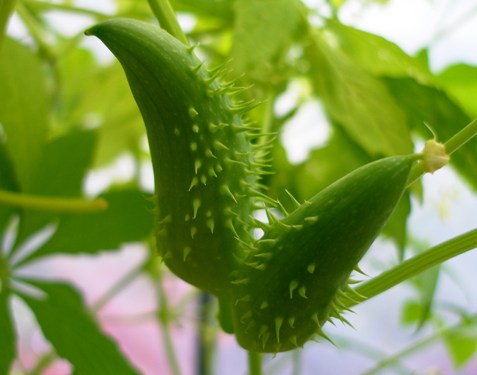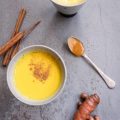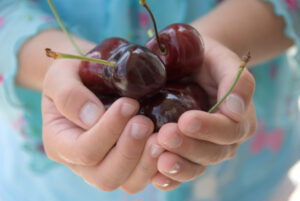
Virgil Evetts
As a flavour chaser from way back, and a gardener whose tastes run to the fanciful, I’m forever trying new things out back. But despite this rather naive enthusiasm, it’s not very often that I stumble upon a climatically feasible new food crop that is worth anything more than novelty value. Oh, I’ve had my successes: so-called tropical food plants that will grow here in Auckland in bold defiance of conventional wisdom. Some even offer up a few edible morsels (winged beans and cassava fall into this category) in a good year. But more often than not – a LOT more often than not – they prove more trouble than they are really worth. The chances are that if something grown for food overseas could be grown here it would be, either commercially or for the home garden racket.
A rare exception to this rather gloomy truth is the wonderful, delicious, hardy and rampant caigua (Cyclanthera pedata). This locally, and frankly inexplicably obscure member of the cucumber family, has been cultivated in the Andes for thousands of years, and is regarded as one of the finest native food crops of the region. That’s quite some billing too, considering potatoes, peppers and tomatoes come from the same part of the word.
Although all parts of the caigua (said: kai-waa) plant are edible, the curved and mostly hollow green pods are of the most interest and value in the kitchen. Around the size of a jalapeno pepper, with a scattering of soft, ornamental spikes (although some fruit are quite ‘baled’), caigua pods tastes like a perfect fusion of green beans and cucumber. They have a crisp, succulent texture and are utterly delicious, either raw or used anywhere you would use green beans. In parts of South America they are popular stuffed with curd cheese, battered and deep fried as a bar snack.
Caigua plants grow at an alarming rate, and will quickly escape up into the nearest tree if not kept in check, putting on many metres of growth in a season. Fortunately they are strictly annuals in our climate, and sulk into submission once the cool weather kicks in.
Besides being easy to grow and uncommonly good, caigua are believed to offer a number of potent health-giving properties, including reducing cholesterol levels. That said, there is not much in the way of hard evidence to back this up, so don’t pin your hopes or health on it just yet.
For my purposes all that matters is that the plants are seemingly pest- and disease-free, thrive on neglect, and produce buckets full of great tasting fruit/vegetables.
At the moment caigua are only available in New Zealand through a single seller on Trademe, but I expect this to change. As a future darling of the restaurant scene, caigua have huge potential. I can well imagine chefs falling love with them – however briefly. Caigua can be steamed, fried, stuffed (see above), eaten raw and even turned into soup.
I’m pretty reserved and cautious about jumping on bandwagons, but in the case of fabulous, fruitful caigua, I’m more than happy to start one. Hop on board.




Brilliant article, thank you. I bought 2 plants this week, grown by an organic farmer in Christchurch. Can’t wait for the fruit, lol. Cheers, Marianne.
Hi Marianne, could you please share the contact of the organic farmer please?
What is the best way to eat them as this is the first time I have grown them
I have just brought a packet of seeds from Kings Seed of Katikati, New Zealand.
Stewart
*have
Hello,
I need to know where can I purchase the Caigua fruit or the seeds, I need this to help with my fathers cholesterol problems.. I would really appreciate if you can help me.
Best Regards,
Patricia Rodriguez
Kings Seeds are selling them now (I bought them last week 24/10/16)
A few days to a week, depending on temperature and freshness of seed. Good luck.
Does anyone know how long the seedlings take to sprout?
Eureka I have found our baby caigua, once you get your eye in we found we have the makings of a good crop! Can’t wait to taste them. I read somewhere that you can pickle them would i use a gherkin type recipe?
Diane, they produce male and female flowers. Like most cucurbits they tend to produce male flowers first and then females and males a bit later. The female flowers have tiny fruit at their base.
I have them growing like topsey but no fruit yet, where does the fruit form i have lots of flowers but nothing forming? Growing in Havelock S.I.
I’m on the Bandwagon! Love them, love them, love them! Growing cyclanthera for the first time this year, seed from Koanga, fresh, tasty and really cool looking. Growing like weeds :-)
Caigua seeds are in Kings latest catalogue, I planted some this season, so far not that fussed on them raw, they just seem a little boring like a spongy cucumber/bean, will give them a try steamed before I condem them to the compost heap.
I found this site after ordering the Caigua seeds from Trade me. Very excited about this new vege after having boring veges in the winter. Can’t wait to taste it in a curry.
Cheers
It’s woth noting that according to Wikipedia “It is of common knowledge in Peru that while eating it in small quantities reduces cholesterol levels, eating large quantities of caigua has the counter effect of damaging eyesight.”
So don’t eat too many!
I am happy to join your bandwagon once I get a vege patch going at our new dwelling. Do you grow them from seed?